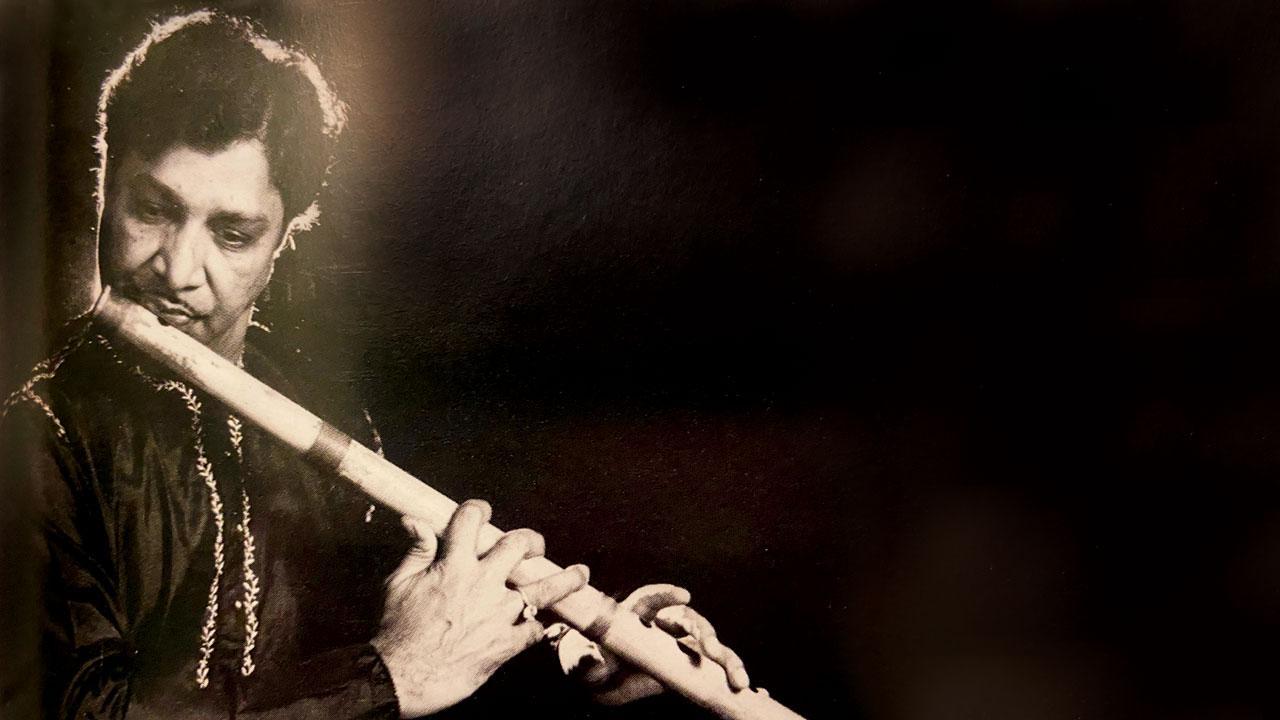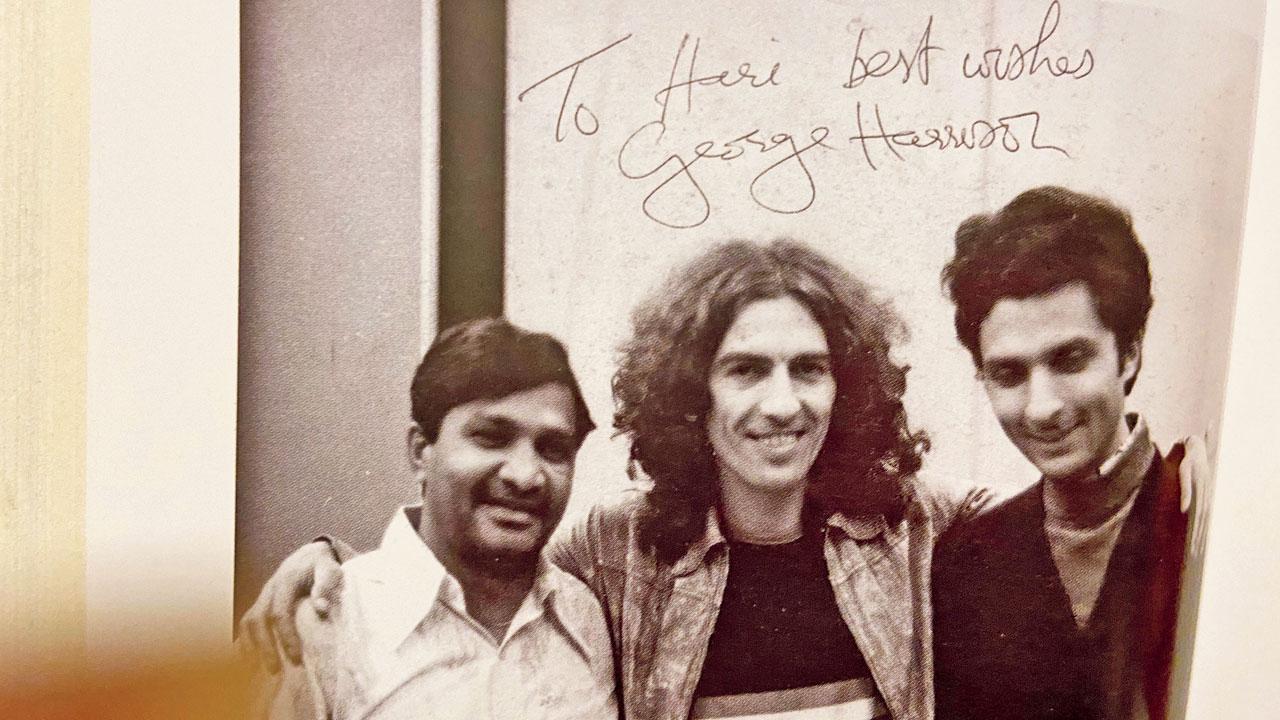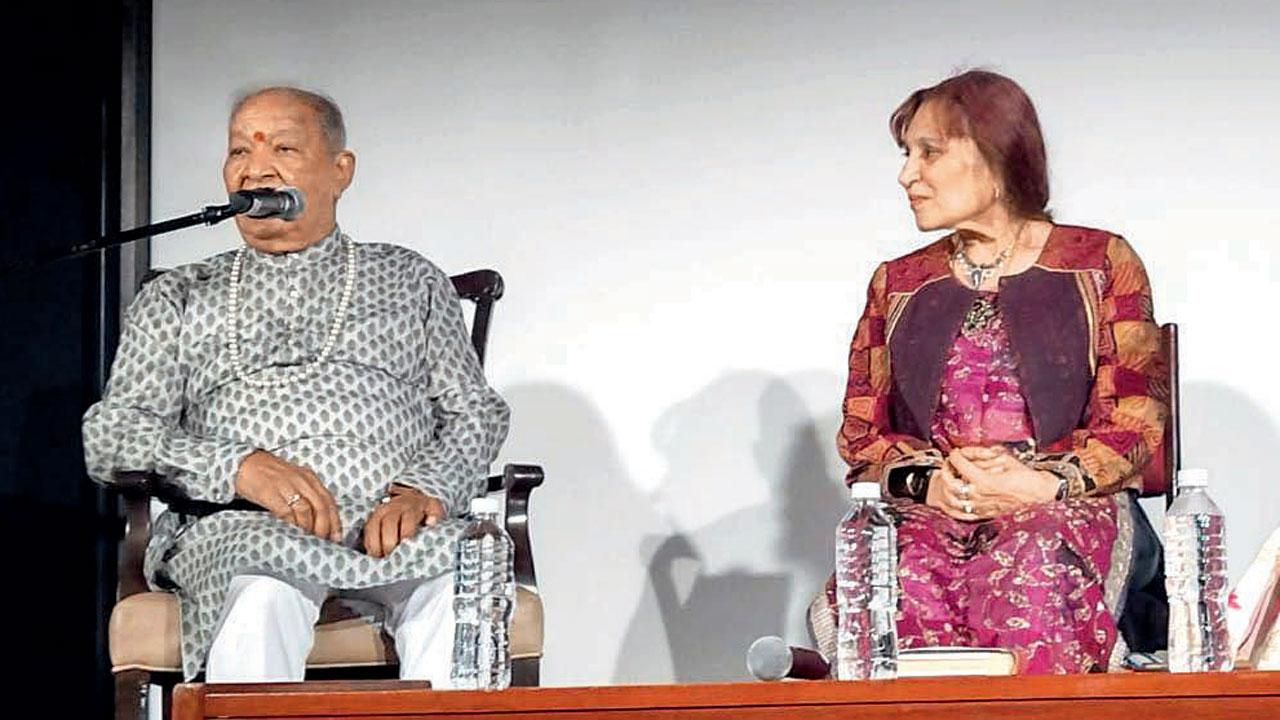Breath of Gold, author Sathya Saran’s title on Pandit Hariprasad Chaurasia’s dramatic life, released just before the country went into a lockdown. Saran, who recently spoke with the maestro at a city venue, shares snippets from the evening and his life

Pandit Hariprasad Chaurasia
Who would imagine a classical flute player as a wrestler in his early life? Pandit Hariprasad Chaurasia’s life — as captured in Breath of Gold (Penguin India) — is no less than a film. Author Sathya Saran speaks about documenting his life.
ADVERTISEMENT
Was the recent chat with the flautist at NCPA your first meeting with him since the pandemic?
I met him a couple of times during the pandemic, too. We met, talked and laughed at a function previously. I had also visited him to personally hand over copies of the book. Pandemic or not, I keep in touch with him and his family.
 A signed picture from George Harrison (right) to Pandit Chaurasia (left) and Pandit Shivkumar Sharma. PICS COURTESY/PENGUIN INDIA
A signed picture from George Harrison (right) to Pandit Chaurasia (left) and Pandit Shivkumar Sharma. PICS COURTESY/PENGUIN INDIA
After a long break from tactile exchanges, how did this evening feel?
It was wonderful. All of us had a great time together. The thing about Hariji [Hariprasad Chaurasia] is that there’s not one dull moment around him. He made the audience laugh, and regaled them with humorous incidents from his life. Of course, we discussed the book, too. He tends to speak in a self-deprecating manner and dishes out humour with a straight face. I remember him recounting a happening at an immigration office on one of his international tours; the officers would ask tabla players to take out and show their instruments. When Hariji was asked to do the same, he told them, “Dekh lijiye, idhar bhi chhed hai aur udhar bhi chhed hai [You can see for yourself, there are only holes on either side].”
How has the response to Chaurasia’s biography been?
Quite strangely, it’s been delightful. I received a message from fashion designer Krishna Mehta some time ago, and it fills my heart. She attended the event and later sent me a message saying that she needed to work on her collection, but couldn’t put the title down. Apparently, she kept telling herself, “Just one more page”. That is the kind of response the book has been fetching so far.

(From left) Pandit Hariprasad Chaurasia and Sathya Saran
Tell us about your long-standing association with the classical flautist.
Even before taking up the book, I have worked with him in an unofficial capacity. Back then, his wife, Anuradha Roy, was making a television series on musicians, and I had written two scripts for her. I travelled with them to Oslo once; Zakir bhai [percussionist Ustad Zakir Hussain] was also there. So, although I knew him and we had a cordial friendship, I was continually in awe of this renowned figure. I had written the back cover piece for The Valley Recalls — a sequel to Call of The Valley released in 1967. When the book began to take shape, he was very happy to know that I was writing it.
How do you look back at your journey with writing and researching the book?
The book has not been written in a conventional format. The format is pretty unusual. It proceeds with striking interludes and anecdotes that offer thoughtful breaks in knowing the artiste, and stand out as singular pieces. I did not pen his biography with a view to condense a life as long as 82 years in 200 pages. Compiling instances from a life as eventful and pronounced as his is a tough job. I wrote this book in a certain way to make it accessible for young individuals. This is a legacy that we must pass on to the next generation. His life shouldn’t fade out with
the people who have heard him. Thankfully, Breath of Gold has been able to strike that chord of relevance across age groups.
Do you observe Chaurasia evolve over the years?
I notice his humility and grit even at 84. On some days, he sparkles in front of an audience; on other days, you can see him make an effort despite poor health. That worries me. After the talk at NCPA, he personally signed so many copies. At his age, it is physically tiring.
 Subscribe today by clicking the link and stay updated with the latest news!" Click here!
Subscribe today by clicking the link and stay updated with the latest news!" Click here!







